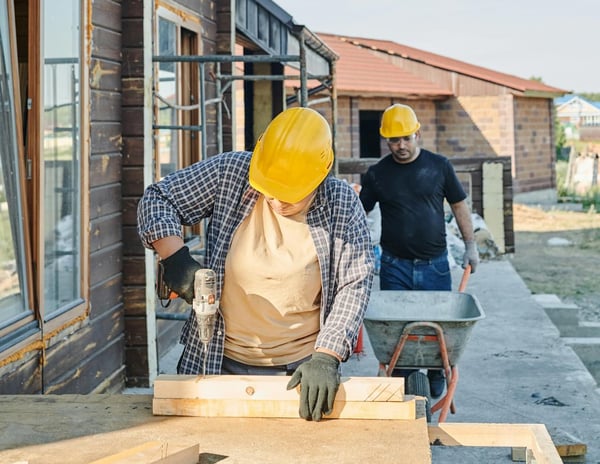Homeownership hit at all-time low at 62.9% in 2016. While owning a home was once an integral part of the American Dream, we’re seeing it matter less and less to up-and-coming generations of homebuying age. Millennials and Gen Z, saddled with student debt and low wages, are often unable to afford a home – if they even want to buy in the first place.

Out of the pandemic came the surge of the build-to-rent (BTR) model: a type of real estate investment in which homes are built or bought as rental communities that offer the best of rental amenities combined with the desirable SFR lifestyle.
But don’t be fooled: build-to-rent isn’t all hype. This is an emerging model here to stay. The pandemic might have kicked things into high gear, but BTR was always going to rise. This time last year, Forbes predicted that BTR trends would stabilize in 2023 then go into a major boom. We'll soon see whether they—and other leading real estate thinkers—are right.
The Advantages of Investing in BTR
Predictability
Because investors are most often dealing with a community built by a single developer, there’s a level of predictability you wouldn’t get when buying properties piecemeal. There’s consistency within the market, the construction, property age, and maintenance needs. That means costs are largely predictable and maintenance demands are uniform. For the investor, this makes the numbers more concrete and risks easier to manage.
Consolidated Property Management
If you buy across multiple markets and long distances, you may find yourself working with more than one property management companies. Companies can vary widely in quality and procedures. While some have teams operating in multiple markets, it isn’t always the case. With a build-to-rent community, you know that the same management team is overseeing every property you hold in that community. For you, this means that reports, payments, and updates are all coming from the same place with the same standards.
Renter-Optimized Design
Single-family homes truly offer the best of space and privacy. Both SFRs and BTRs provide the big advantage of a single-family lifestyle most close to that of a homeownership experience. The properties are sized appropriately to attract both downsizing empty-nesters and families with children. With the advantage of rental amenities and the attractive size and design of a single-family home, renters get the best of both worlds. For the investor, that means a high-demand property.
Lower Turnover
Single-family homes truly offer the best of space and privacy. Both SFRs and BTRs provide the big advantage of a single-family lifestyle most close to that of a homeownership experience. The properties are sized appropriately to attract both downsizing empty-nesters and families with children. With the advantage of rental amenities and the attractive size and design of a single-family home, renters get the best of both worlds. For the investor, that means a high-demand property.
Are There Challenges BTR Investors Face?
Short answer: yes. All investments come with some threshold of risk.
Diversificiation
The BTR model is a marriage between the SFR and the multifamily property. The idea is that a developer, investor, or investment firm, will own multiple, if not all, the properties in a BTR community. At the very least, multiple properties very close together will be owned and share management and amenities. This consolidation is great in one regard, but investors almost have to think of these properties like one multifamily unit: just in a neighborhood rather than in a single building.
Because of this, market diversification is lacking. While you do benefit from multiple streams of income, it is still centralized in a single market that may face economic challenges, changes in legislation and tax law, or natural disaster.
Ideally, you invest in multiple properties across multiple investment markets.
Price-to-Income Ratios
In an interview with Multi-housing News, Trez Capital’s Caperton Putt points out the underwriting challenges that may face BTR investors due to costs. A property outside of a build-to-rent pool may be priced much differently that the one that’s part of the community. Of course, that community comes with big benefits – but the cost difference can create some unique challenges.
The Future of the BTR Model
What investors need to know right now is that the BTR model has steadily gained popularity, particularly in Sunbelt markets. (Which is good news, considering Sunbelt markets do tend to be more affordable.) Although the pandemic kicked this trend into overdrive, it didn’t start it. BTR will go a long way towards alleviating the ongoing housing shortage, as building individual homes for sale just isn’t going to cut it.
Of course, the BTR model is more challenged in markets where there’s a lack of space for significant land development. Keep this in mind when exploring the feasibility of the model in your investment markets.
Beyond that, see BTR as another opportunity to capitalize on the reliability and performance of traditional single-family rentals.
Did you know that REI Nation offers turnkey BTR properties in a number of markets?











-1.png)
